
9 major animal phyla
- Subject:
- Biology
- Life Science
- Material Type:
- Diagram/Illustration
- Date Added:
- 11/07/2018

9 major animal phyla
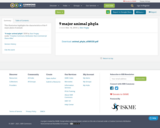
This illustration highlights the characteristics of the 9 major phyla of animals

This video features residents of Shishmaref, Alaska, plus environmental journalist Elizabeth Kolbert and scientist John Holdren, exploring the human impacts of global climate change.
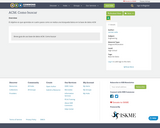
El objetivo es que aprendas en cuatro pasos como se realiza una búsqueda básica en la base de datos ACM

This resource is a video abstract of a research paper created by Research Square on behalf of its authors. It provides a synopsis that's easy to understand, and can be used to introduce the topics it covers to students, researchers, and the general public. The video's transcript is also provided in full, with a portion provided below for preview:
"Traumatic brain injury (TBI), or brain damage caused by a sudden blow or jolt to the head, is a leading cause of death and disability worldwide. The mechanisms are complex and differ among patients, making TBI difficult to treat, and anti-inflammatory agents that are effective in animal models have been less promising in human trials, indicating that better treatments are needed. To explore new strategies, a recent study investigated the effect of the anti-inflammatory compound ACT001 on TBI. In mice, ACT001 reduced brain damage and improved motor function after TBI by reducing trauma-induced activation of microglia, which are immune cells of the central nervous system. In vitro, ACT001 also reduced activation of mouse and rat microglia induced by the bacterial toxin lipopolysaccharide (LPS) and downregulated LPS-induced secretion of proinflammatory molecules in a mouse microglial cell line..."
The rest of the transcript, along with a link to the research itself, is available on the resource itself.

Testing Logos

This resource is a video abstract of a research paper created by Research Square on behalf of its authors. It provides a synopsis that's easy to understand, and can be used to introduce the topics it covers to students, researchers, and the general public. The video's transcript is also provided in full, with a portion provided below for preview:
"Myocardial infarction (MI), or heart attack, can cause long-term damage that leads to heart failure. To treat this type of heart failure, it’s critical to heal the pathological structural changes in the heart and preserve cardiac function. A recent study investigated potential treatment targets by exploring the role of the enzyme ADAM17, whose levels are increased during MI. In a group of 152 patients with MI, high ADAM17 levels were associated with a greater incidence of subsequent heart failure, as well as poorer heart function and higher mortality, suggesting a negative role of ADAM17. In mice with MI, elevated ADAM17 levels were linked to heart damage, but blocking ADAM17 activity limited the cardiac damage and remodeling after MI. Experiments in cultured heart cells revealed that ADAM17 exerted its harmful effects by promoting loss of the cardioprotective enzyme ACE2 and that the activation of ADAM17 depended on modification of a specific site in the protein p38 MAPK..."
The rest of the transcript, along with a link to the research itself, is available on the resource itself.

The coral reefs of the South Pacific island nation of Vanuatu are the backbone of the island's environmental and economic health. Today they face destruction from a silent predator that can rapidly decimate an entire reef. In this video, students learn about how a starfish is destroying the coral reefs of Vanuatu and how the islanders are adapting.
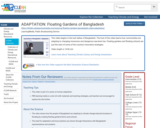
This video begins in the lush deltas of Bangladesh. The host of the video learns how communities are adapting to changing monsoons and dangerous sea-level rise. Floating gardens and floating schools are just the start of some of the country's innovative strategies.
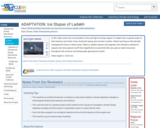
In this video, learn how communities in the arid high-mountain region of Ladakh rely on glacial water to feed streams and water crops during the spring and summer months. Global warming is dramatically reshaping the future of these areas. Meet a Ladakhi teacher and engineer who devised a method to capture and store glacial runoff into magnificent ice pyramids that are used as water resources throughout the summer and during peak agricultural months.
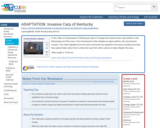
In this video, an entrepreneur is finding new ways to manage the invasive Asian carp problem in the Mississippi and Ohio rivers. Once introduced to help mitigate an algae problem, the carp became invasive. This video highlights how the local community has adapted to the issue, including how they have gained ideas about how to utilize the carp from other cultures to help mitigate the issue.

This is a fact sheet defining OER, explaining the 5 Rs of OER, and discussing the relevance of OER to adult education.

This resource is a video abstract of a research paper created by Research Square on behalf of its authors. It provides a synopsis that's easy to understand, and can be used to introduce the topics it covers to students, researchers, and the general public. The video's transcript is also provided in full, with a portion provided below for preview:
"Healthy corneas are clear and lack blood vessels, but injuries like alkali burns can trigger neovascularization. This serious complication reduces the patient’s vision and is the leading cause of failure in corneal transplants. Previous studies have suggested that AIP1 (Apoptosis signal-regulating kinase 1-interacting protein) is involved in inflammatory neovascularization induction and that NOX4 (NADPH oxidase 4) is activated by alkali burns. NOX4 can produce reactive oxygen species (ROS) which unbalance the expression of the inflammation-related proteins NLRP3 and NLRP6 (NLR family pyrin domain containing 3 and 6). Researchers recently used a mouse model to examine how AIP1 and NOX4 are related to NLRP3/NLRP6 after corneal alkali burns. Corneal alkali burns decreased AIP1 expression and increased the expression of two pro-angiogenic proteins, clv-IL-1β (cleaved interleukin-1β) and VEGFa (vascular endothelial growth factor A)..."
The rest of the transcript, along with a link to the research itself, is available on the resource itself.

aiEDU's AI Toolkits are materials designed to support teachers, parents and other community champions to share the importance of artificial intelligence education and support its adoption in your learning spaces.

This resource is a video abstract of a research paper created by Research Square on behalf of its authors. It provides a synopsis that's easy to understand, and can be used to introduce the topics it covers to students, researchers, and the general public. The video's transcript is also provided in full, with a portion provided below for preview:
"Some proteins are central to many cell signaling processes. One of these key molecules is AKT2. An important kinase involved in cell survival, growth, and metabolism, it has ties to insulin-induced signaling and cancer. AKT2 has a critical role in immune cells such as neutrophils and macrophages; however, although AKT2 is expressed in antibody-producing immune cells called B cells, its function in B cells isn’t clear. In a recent study, researchers sought to understand the role of AKT2 in B cells using AKT2-deficient mice. They found that mice lacking AKT2 had impaired B-cell differentiation. B cells from these mice were not able to form a cluster of molecules called a signalosome in response to B-cell receptor (BCR) signaling, resulting in poor BCR signaling and impaired B cell activation and spreading. These results suggest that as a central orchestrator of signaling, AKT2 function is critical for proper BCR signaling and B cell development, ensuring a functional antibody-mediated immune response..."
The rest of the transcript, along with a link to the research itself, is available on the resource itself.

This resource is a video abstract of a research paper created by Research Square on behalf of its authors. It provides a synopsis that's easy to understand, and can be used to introduce the topics it covers to students, researchers, and the general public. The video's transcript is also provided in full, with a portion provided below for preview:
"Gq protein-coupled receptors (GqPCRs) are membrane bound proteins that transmit signals from outside the cell to internal signaling pathways. One of these pathways is the PI3K/AKT pathway, which plays roles in cellular proliferation, survival, metabolism, and differentiation. PI3K/AKT dysregulation is also often implicated in cancers. A previous study determined that activating GqPCRs in certain cells inactivated AKT, which led to a specific type of cell death, JNK-dependent apoptosis. This unique signal seems to play an important role in physiological and pathological events like pituitary development and cardiac hypertrophy. Now, a new study determined that the mechanism of this AKT inactivation relies on another signaling-related protein, PP2A. When the GqPCRs are not activated, a fraction of PP2A "c" subunit is in a dimer complex with another protein, IGBP1 and they are bound to the p85 subunit of PI3K, causing its activation..."
The rest of the transcript, along with a link to the research itself, is available on the resource itself.

Infografía que presenta algunas plataformas para publicar REAs.
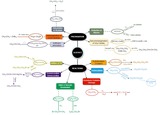
ALKENES

Vídeo del laboratorio ALS ECUADOR

This resource is a video abstract of a research paper created by Research Square on behalf of its authors. It provides a synopsis that's easy to understand, and can be used to introduce the topics it covers to students, researchers, and the general public. The video's transcript is also provided in full, with a portion provided below for preview:
"Immune checkpoints are an effective way that cancers evade the immune system, but they're not the only one. In the case of pancreatic ductal carcinoma, or PDAC, tumor fibrosis also plays an important role. To understand how fibrosis might translate to poor outcomes among patients with PDAC, researchers examined the ARF6-AMAP1 molecular pathway, which research suggests is activated during fibrosis. Findings revealed that AMAP1 correlated with elevated expression of PD-L1, a molecule that tumor cells present on their surface to elude attack by the immune system. AMAP1 was also linked to elevated fibrosis. Consistently, silencing AMAP1 in a mouse model of human PDAC reduced PD-L1 and fibrosis in their tumors. Suppressing the ARF6-AMAP1, therefore, could be one way to ensure that PDAC tumors can’t hide from immune defenses, offering the prospect of more effective immunotherapies for patients with pancreatic ductal carcinoma..."
The rest of the transcript, along with a link to the research itself, is available on the resource itself.